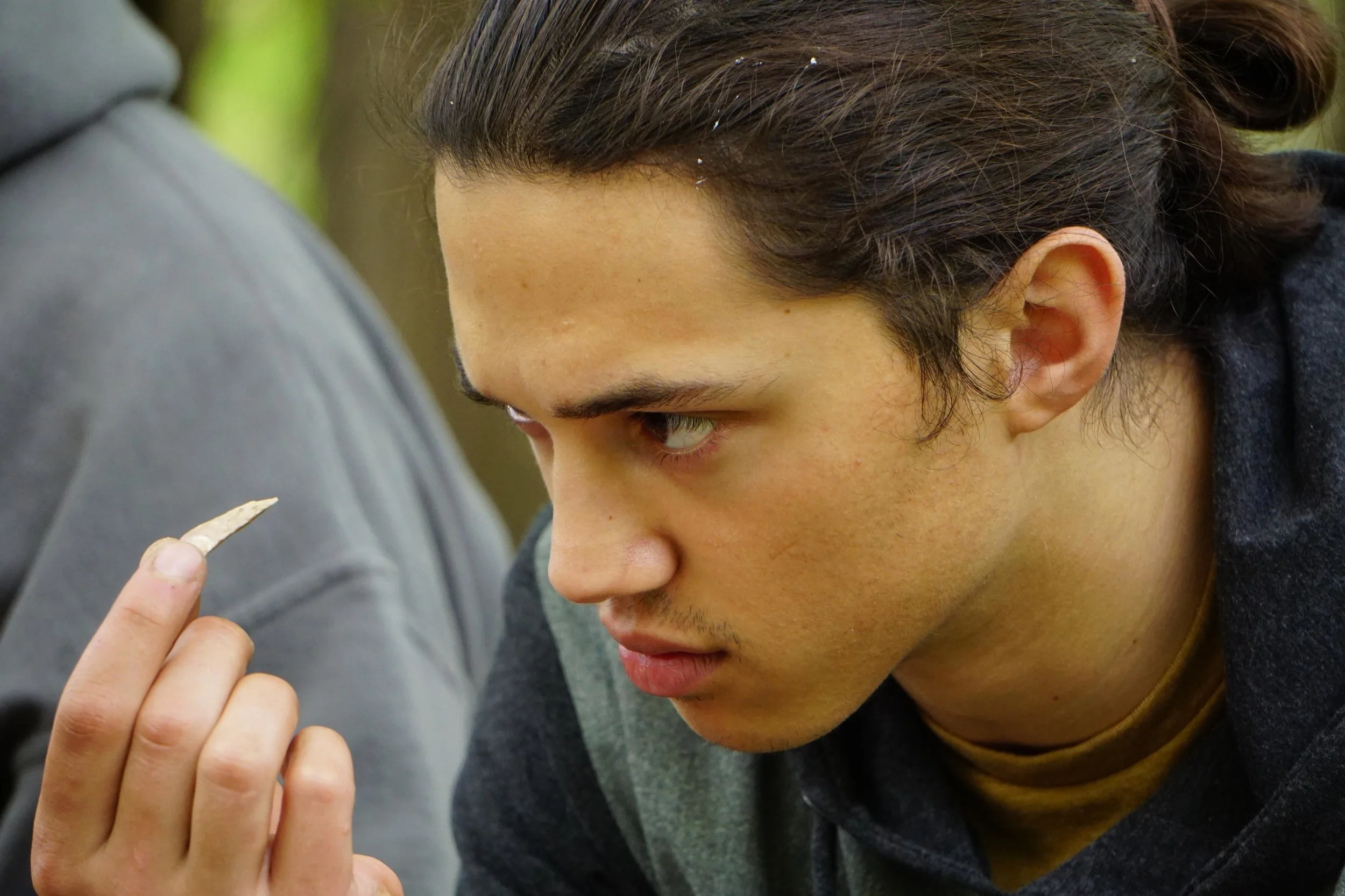It is within nearly a single icon by which most “civilized” humans today remember our ancestors of the hunter-gathering age—the arrow-head. Many public parks, museums, and even whole towns use such an icon to represent the indigenous people in which these places have been renamed by. Through the past few years or of studying lithic technologies (stone tools and their applications), I am finally beginning to understand the depth and magnitude by which the process of stone reduction lives in our essential humanity.
A mentor of mine once said that the human brain has evolved in direct connection to the succession of lithic technology among humans. To put it more explicitly—major technical breakthroughs in the advancement of stone tool technology correlate directly to turning points in the evolution of modern man, both physically and intellectually. More simply, better stone and hunting technology equals more efficient hunting, which means more meat and fat, allowing the brain to grow progressively over time. More over, flint knapping calls on the part of our brains associated with pattern recognition, the same aspect used largely in the development and usage of language!
In my short flint knapping career I have spent hundreds of hours breaking stones; each piece of stone that sits in my hand presents a new challenge, a new puzzle. Given that each new piece of stone has its own unique shape, density, desired outcome, etc., every time you sit down to work the stones ask a new dynamic way of applying the principles of reduction. It essentially becomes a game of chess mixed with a rubix cube, each move additionally requiring fine motor skills and a keen sense of proprioception (knowing where one's body parts are in space, as well as how much strength being used). In such a state of zen with each stone I am brought to new heights of problem solving skills, new levels of awareness, and greater proficiency in observing patterns in the stone that allow for more efficient reduction. You think sudoku is a mind-teaser, try flint knapping!
In the business of our modern lives I know it can feel like a waste of time to engage in a craft that seemingly has no relevance or use to our current lives. When you consider how to spend your weekend after a long week of work, soccer games, meetings, etc., is it really top on the priority list to sit down and make a pile of homemade gravel in your backyard? Probably not. Yet, there is something that continually draws me to working stone, somewhat of a daily meditation and release of energy—where else but the flint knapping pit do you get to smash two rocks together and it be totally socially acceptable?
No other skill has made me feel more closely related to human history. The process of stone reduction and using stone tools offers a window into the evolution of the thought processes and developments that have shaped us into our modern physiology and brain chemistry as homo sapiens. All it took was the search for a sharp edge.


